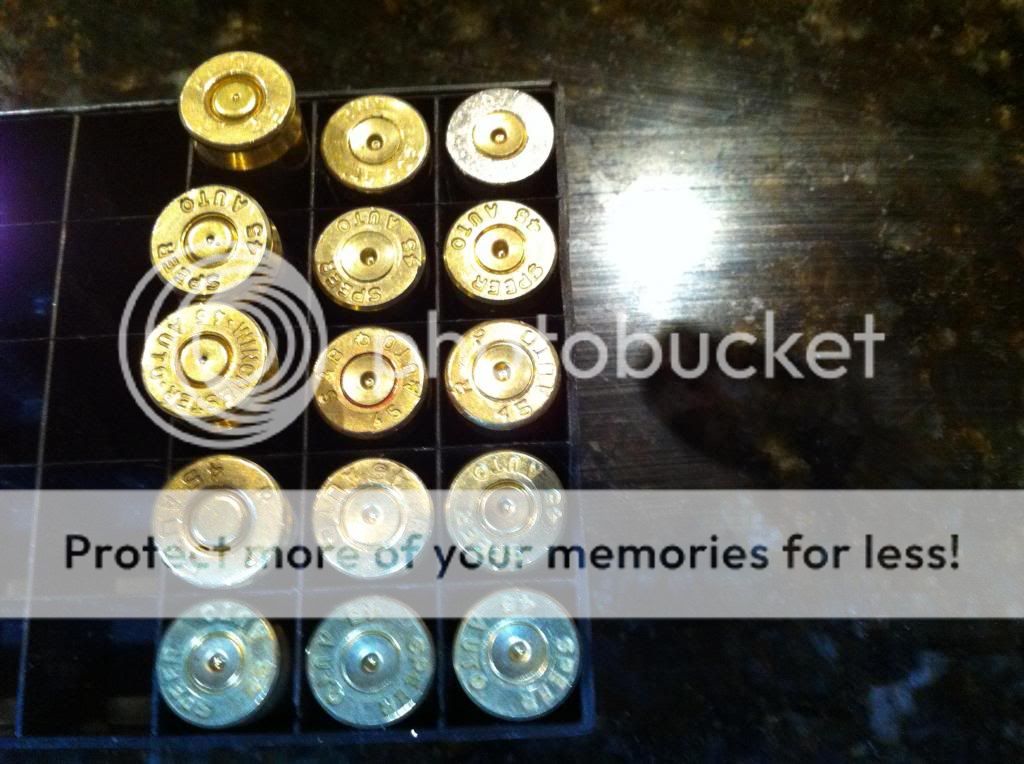32_d3gr33s
Member
just shot a quite a few of my latest loads. First couple times i was out shooting i was staying with the lighter loads. Now that I'm a little more comfortable i was working my way towards the higher end of things. IM not real postitive on weather or not these are normal, so i figured id ask to make sure. these are remington cases, federal 100 primers. and green dot powder in my 9mm They shoot great, are quite accurate. They are a higher charge, but still within recommended loading ranges. (my lower charges all looked very similar too)
 .
.
Mine (left 2) look pretty flat compared to the original remington rounds... (right 2)

All of my .38 special looked fine -remington cases, Remington no 5 1/2 primers and green dot.(i have no more standard pistol primers)

Then my .357 mag loads also seemed to look fine, but i had an issue on a couple of the rounds.

One of the issues that i had, is when the say heavy crimp, I guess they mean HEAVY crimp! only one i had do it, but it had me puzzled for a minute on why my cylinder wouldnt advance to the next round.

Other issue i had, is i had a couple rounds with what looks to be double firing pin strikes. these were the "hottest" loads that i made, but only 2 of 10 had the marks. Havent really seen anything on this before...

all in all I think everything went quite well for my first couple hundred reloads.
 .
. Mine (left 2) look pretty flat compared to the original remington rounds... (right 2)

All of my .38 special looked fine -remington cases, Remington no 5 1/2 primers and green dot.(i have no more standard pistol primers)

Then my .357 mag loads also seemed to look fine, but i had an issue on a couple of the rounds.

One of the issues that i had, is when the say heavy crimp, I guess they mean HEAVY crimp! only one i had do it, but it had me puzzled for a minute on why my cylinder wouldnt advance to the next round.

Other issue i had, is i had a couple rounds with what looks to be double firing pin strikes. these were the "hottest" loads that i made, but only 2 of 10 had the marks. Havent really seen anything on this before...

all in all I think everything went quite well for my first couple hundred reloads.




